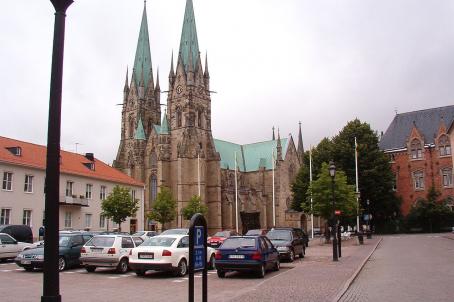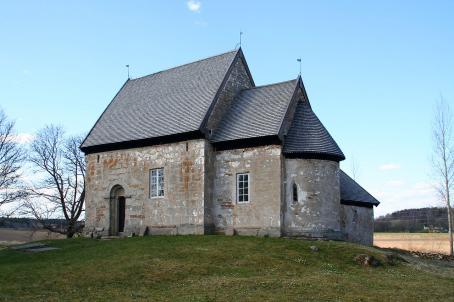Mariestads domkyrka

Mariestad Cathedral, built between 1593 and 1619, is not the main church in the diocese of Skara (that title is held by Skara Cathedral). The plan is that of a late neo-Gothic church, with crossed arms, lancet windows, pointed columns and internal white cross vaults. The chancel has a three-sided end and has been copied extensively in the diocese. The unadorned natural stone facades and the spire were only added in 1905 during the restoration by Folke Zettervall.





